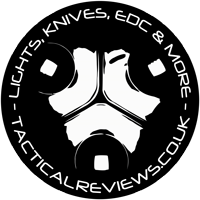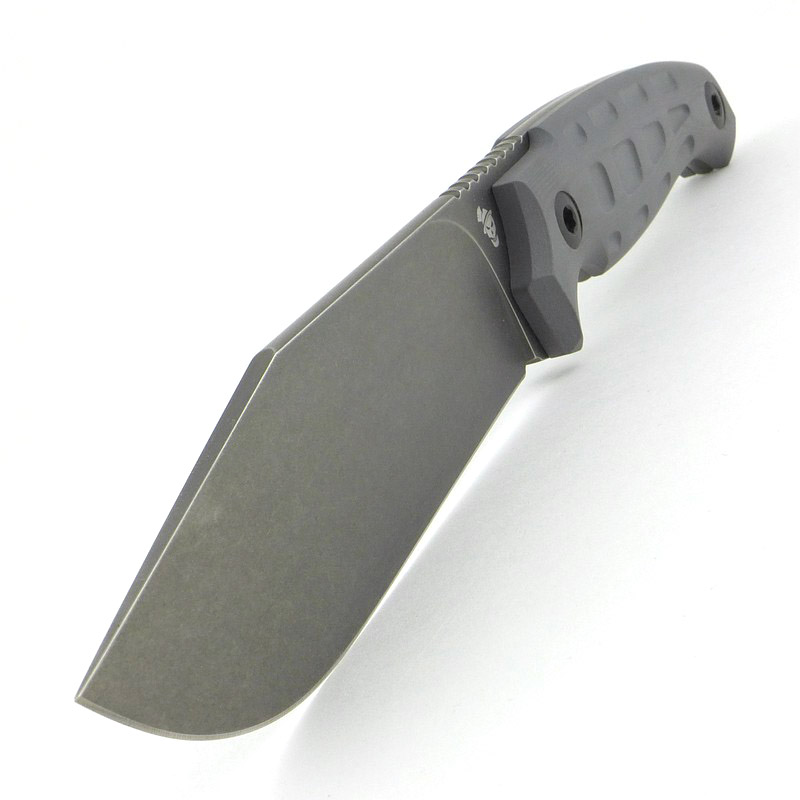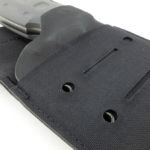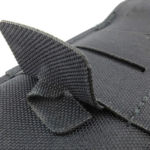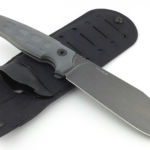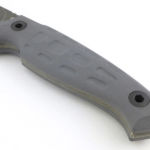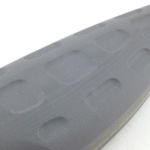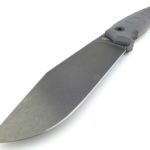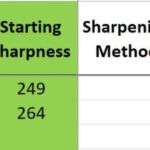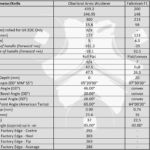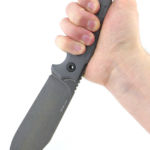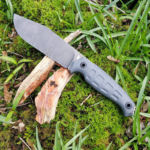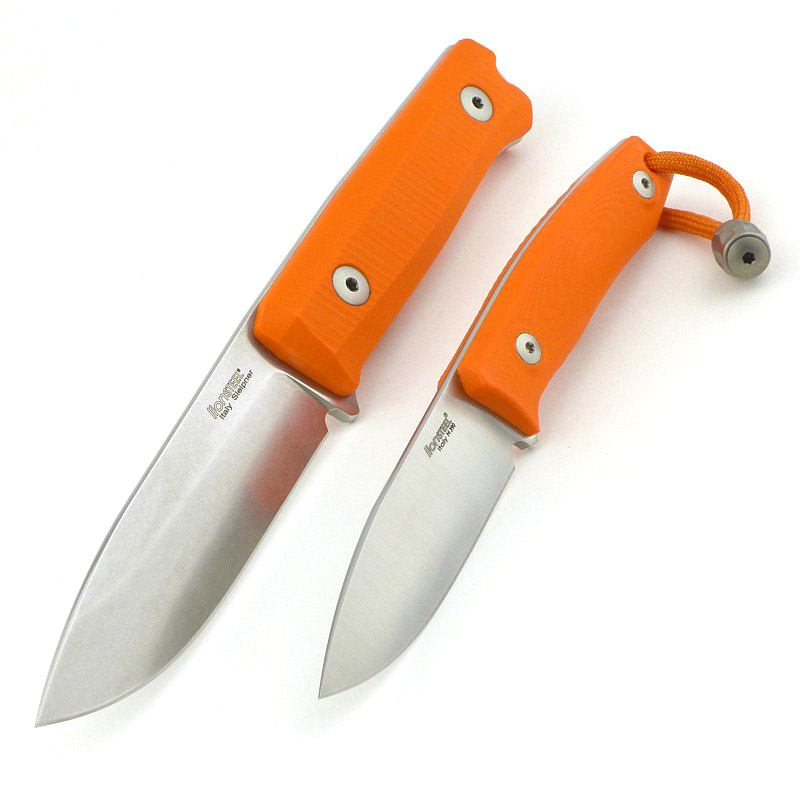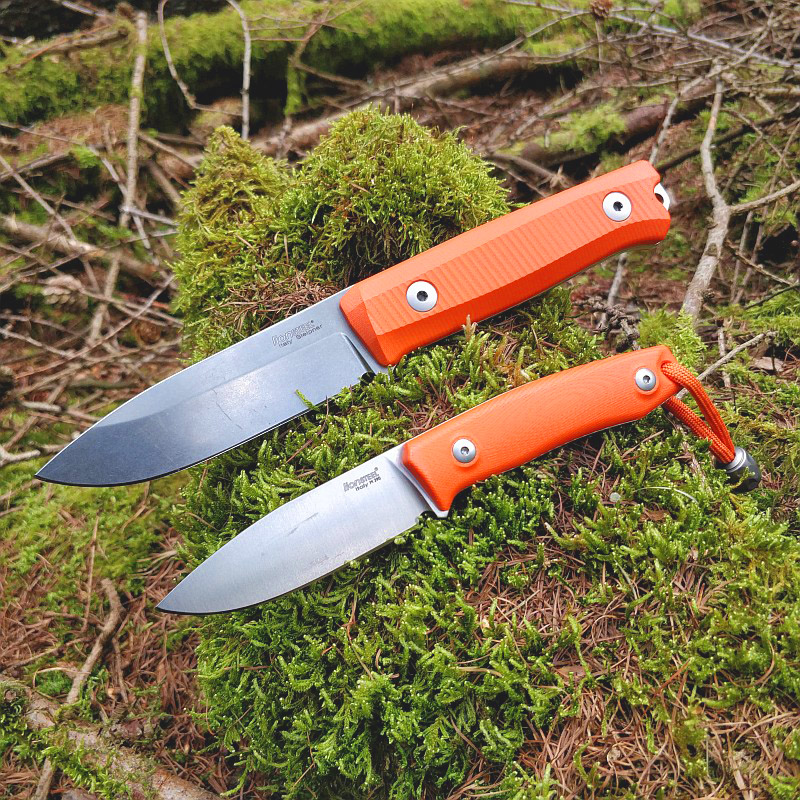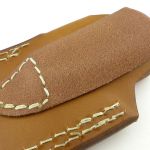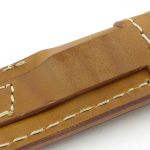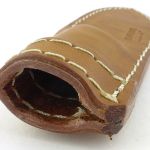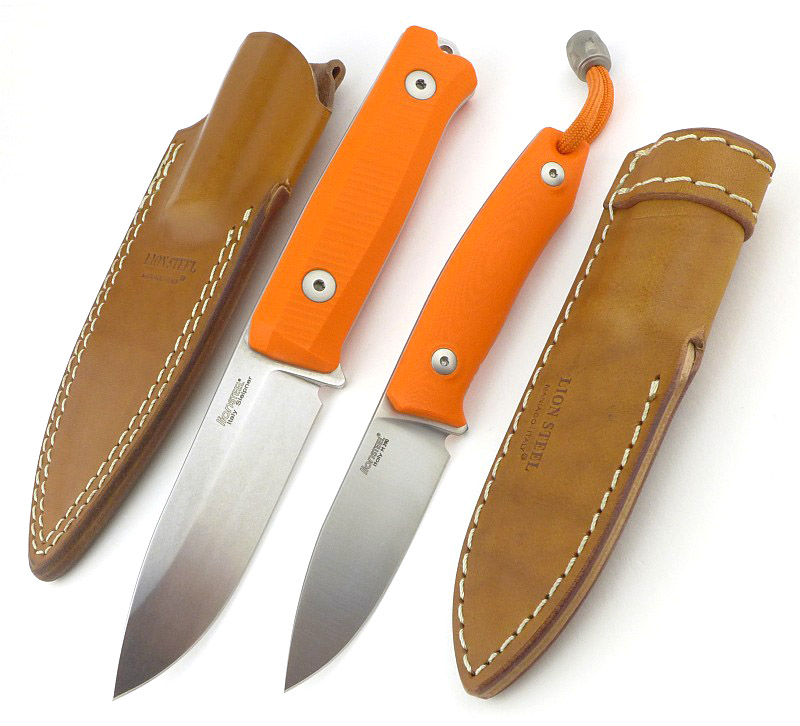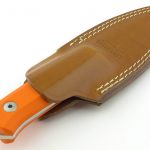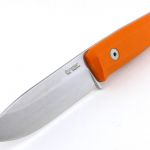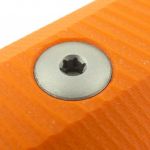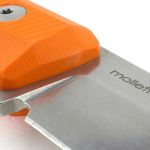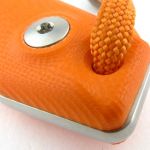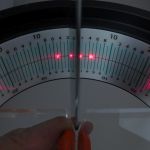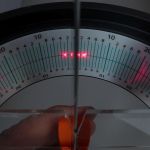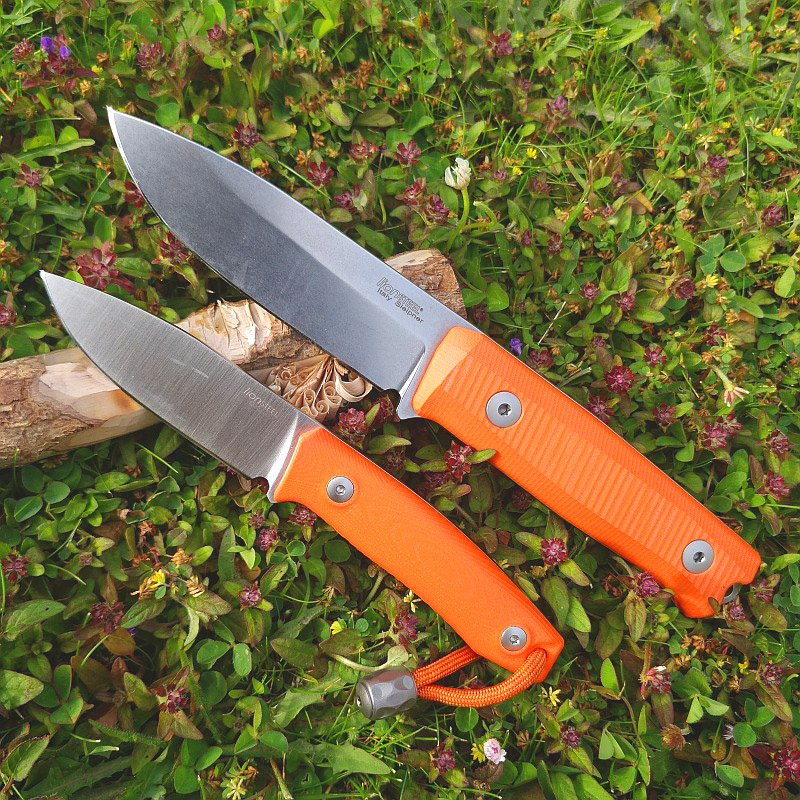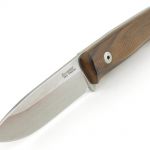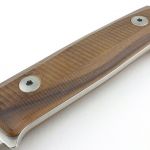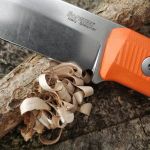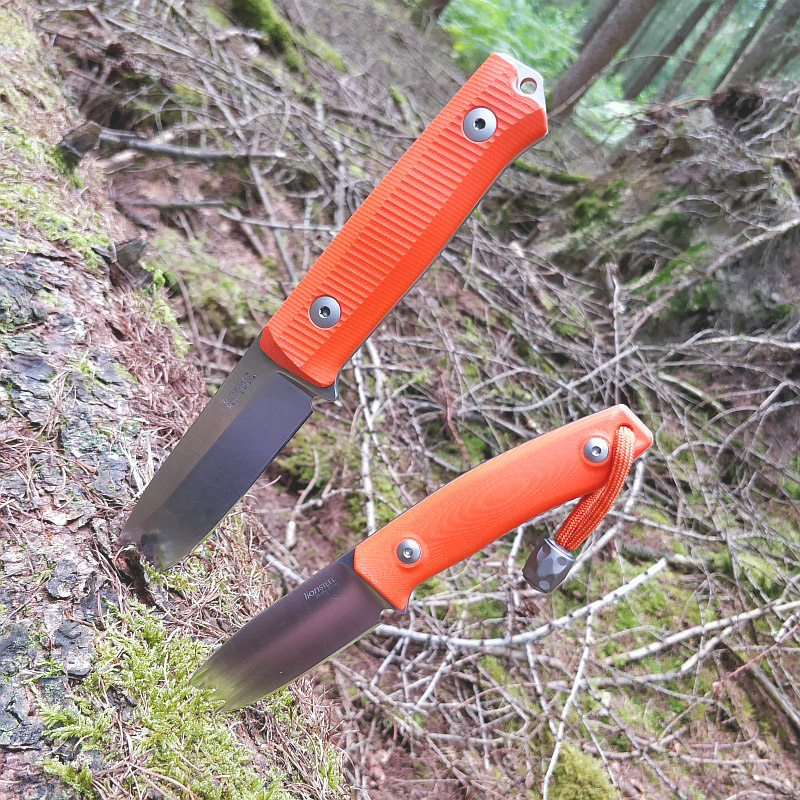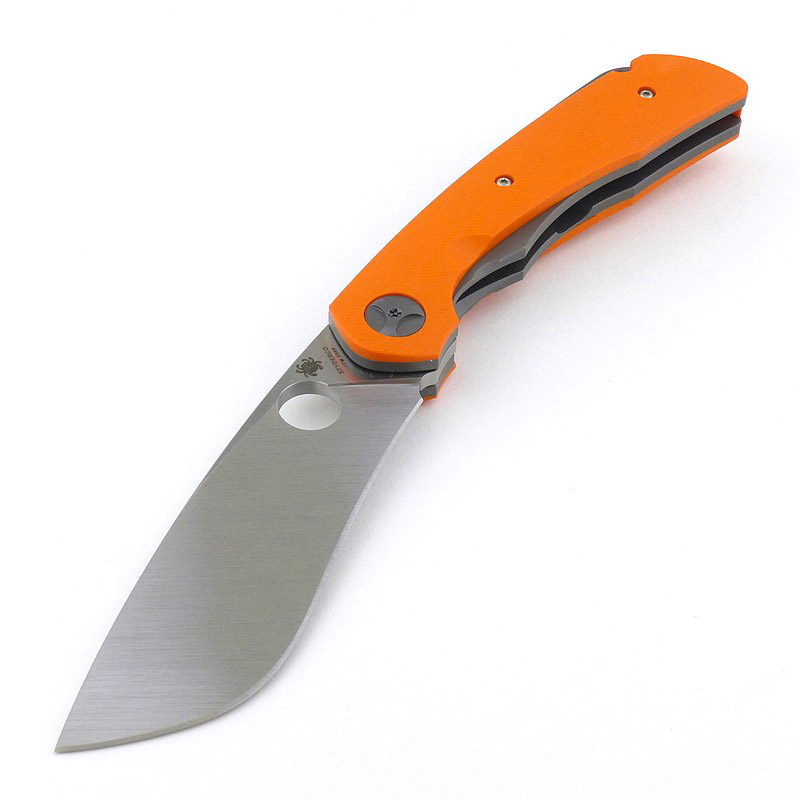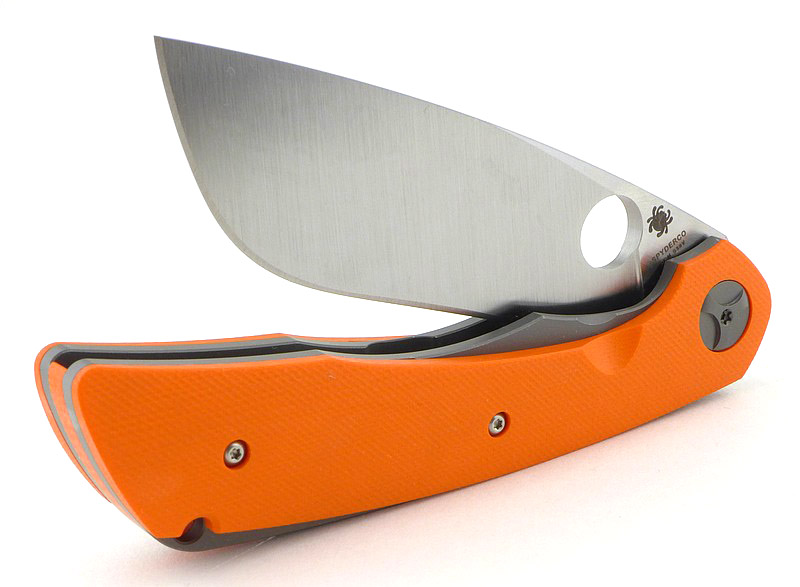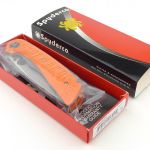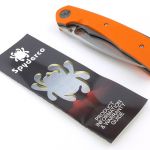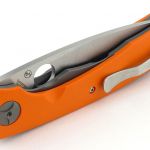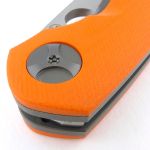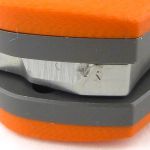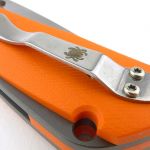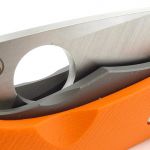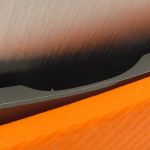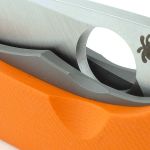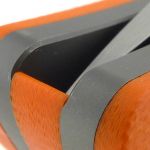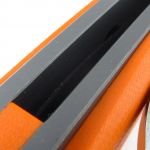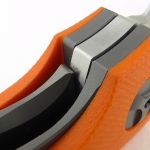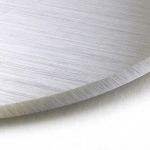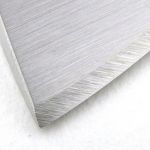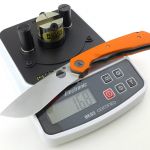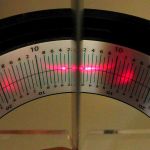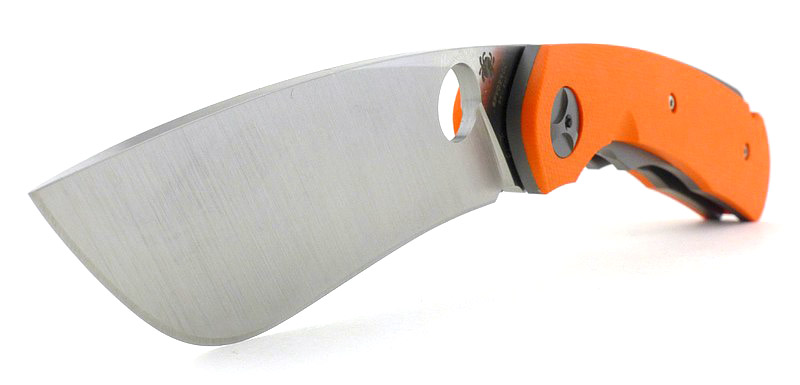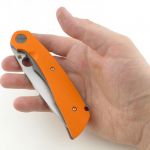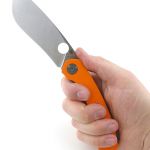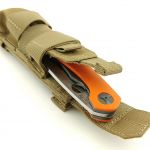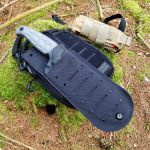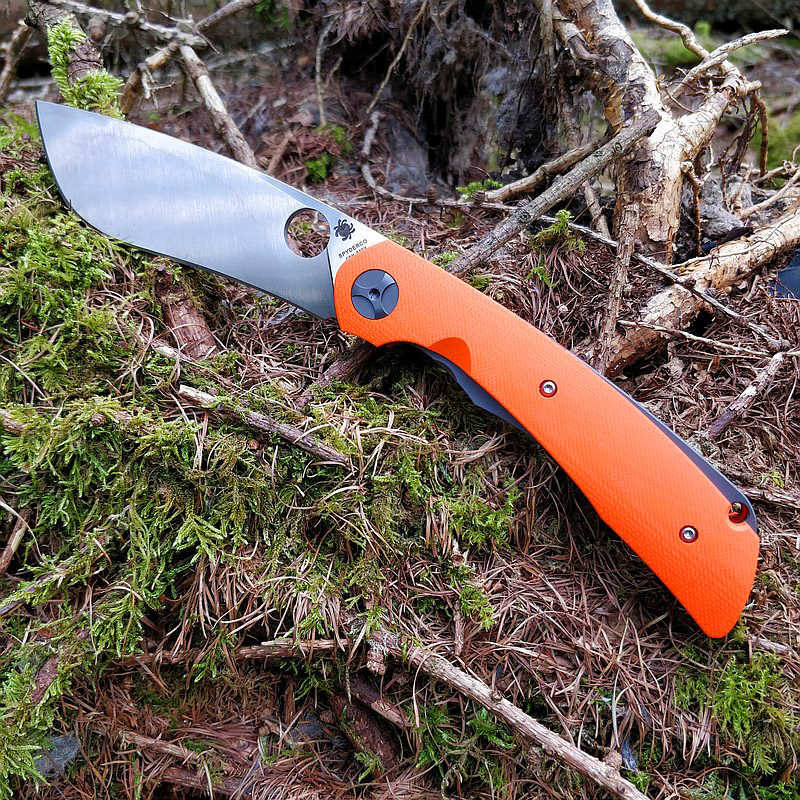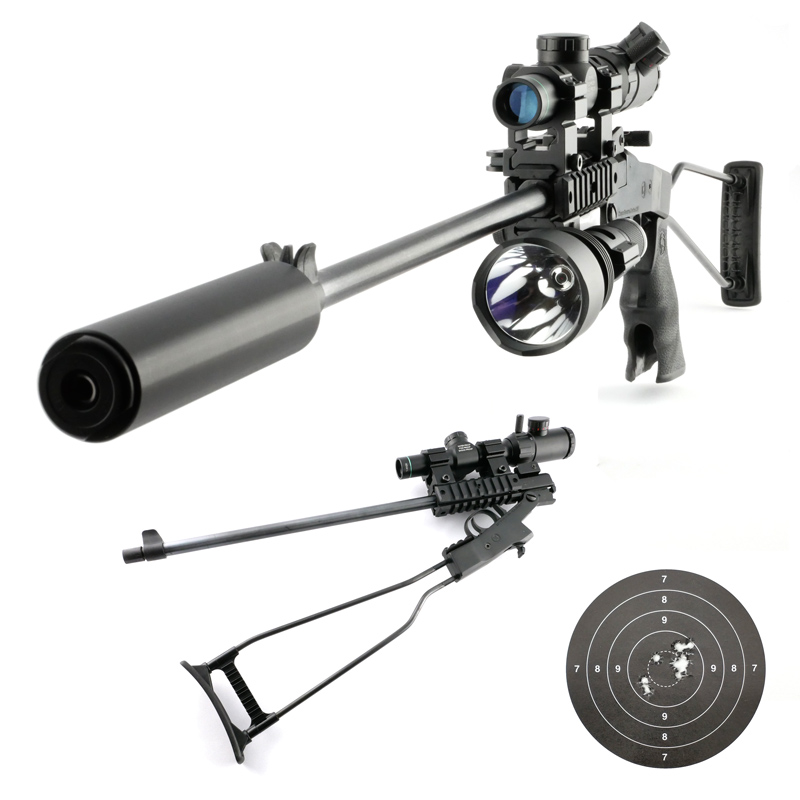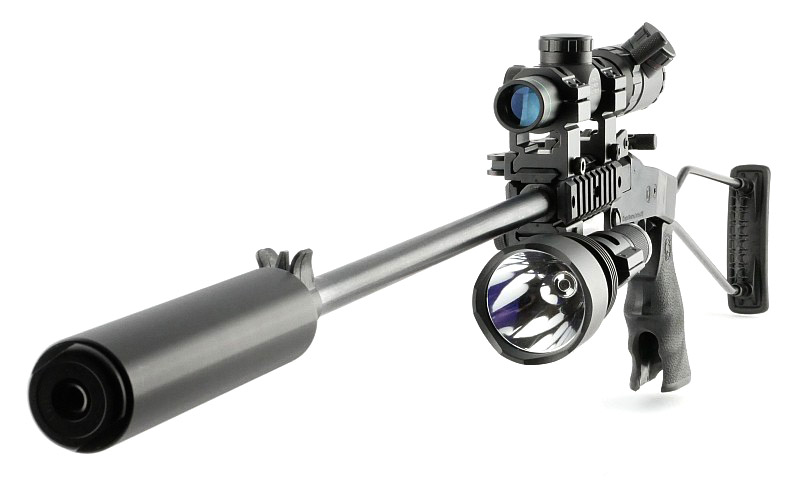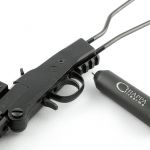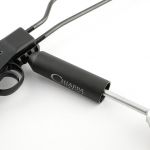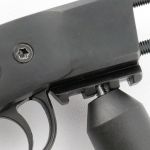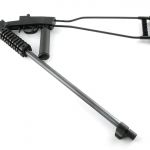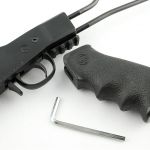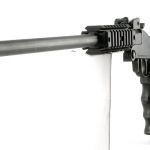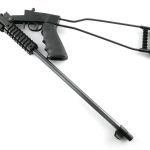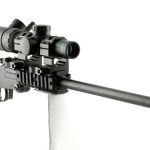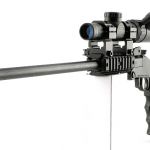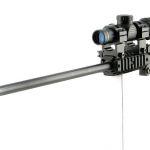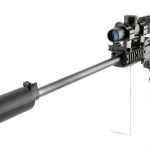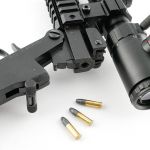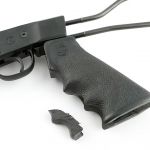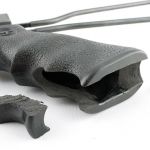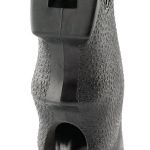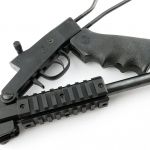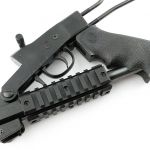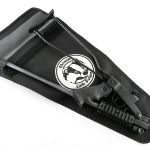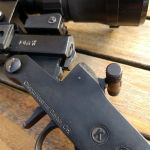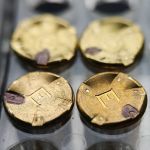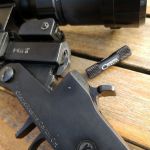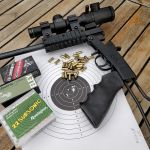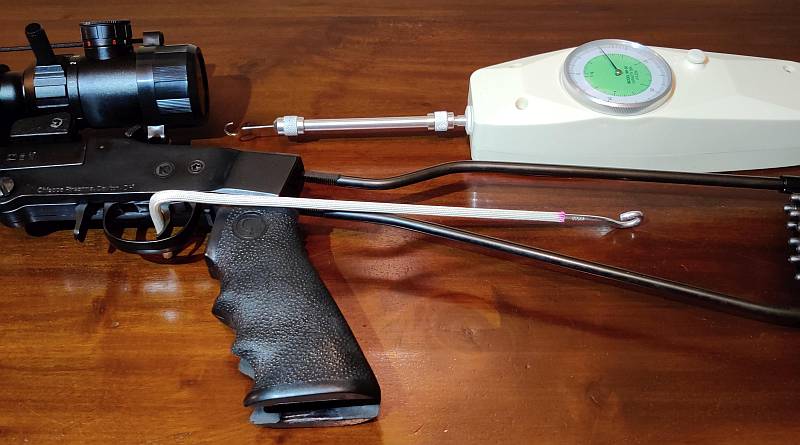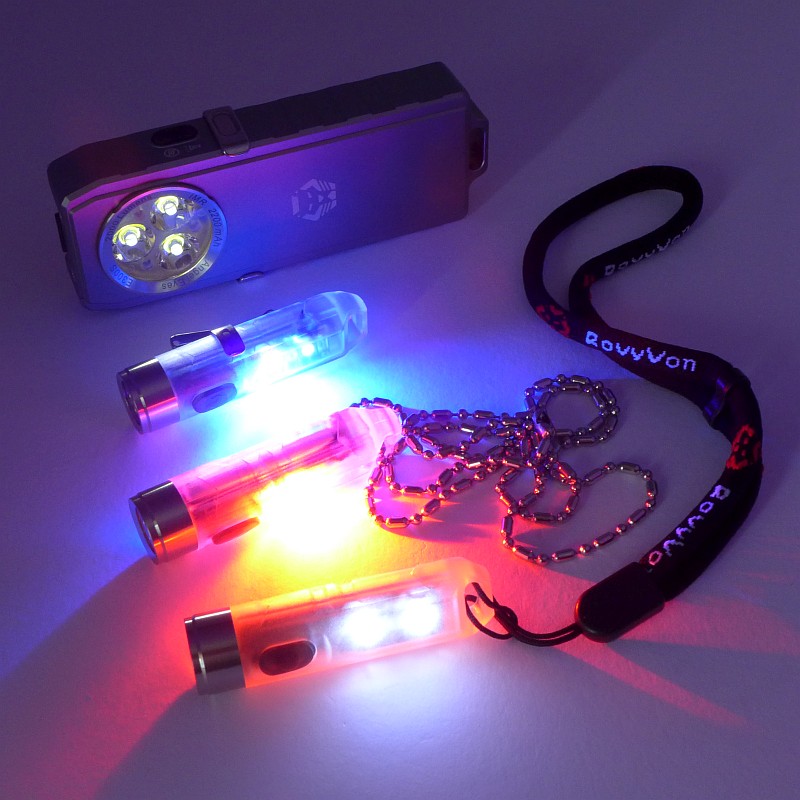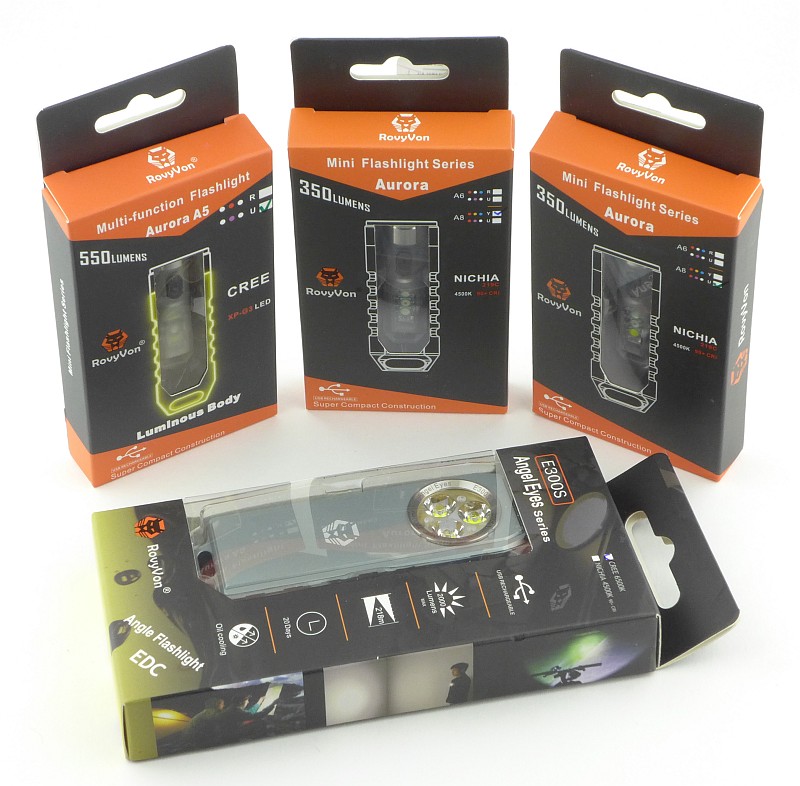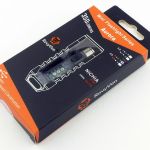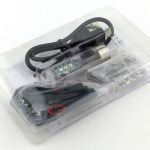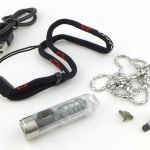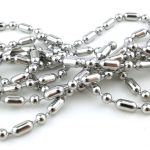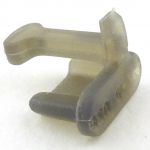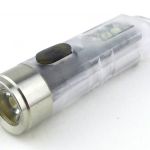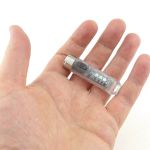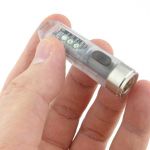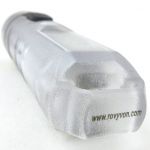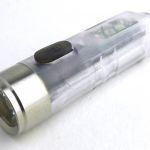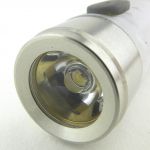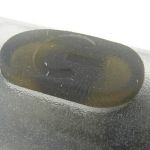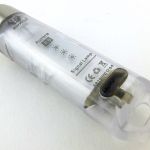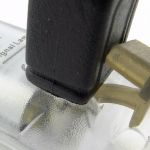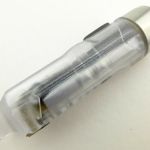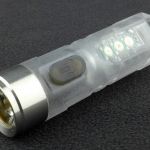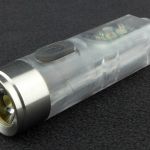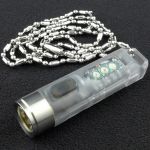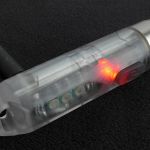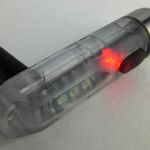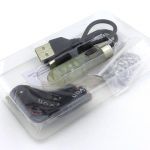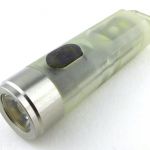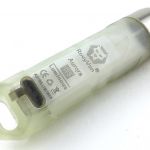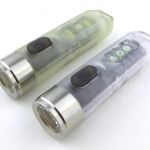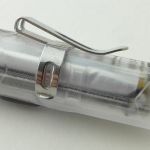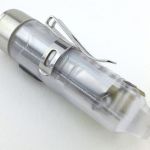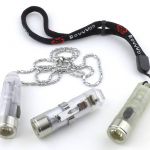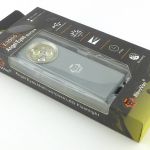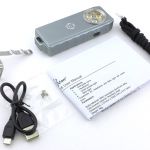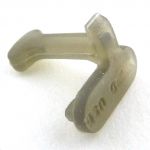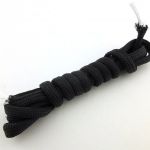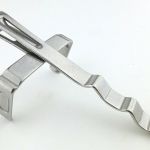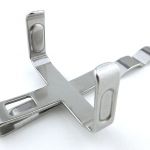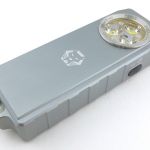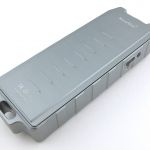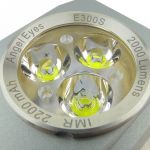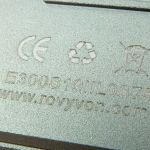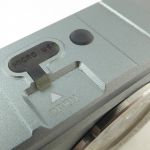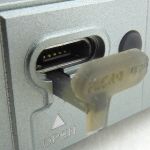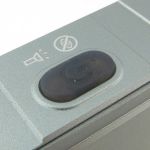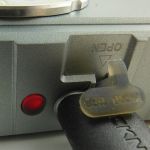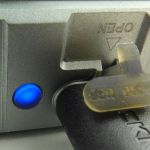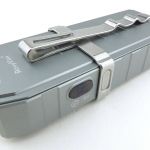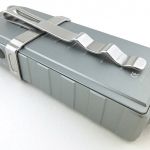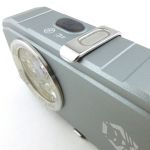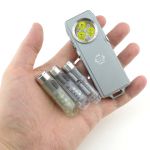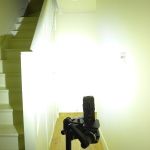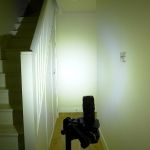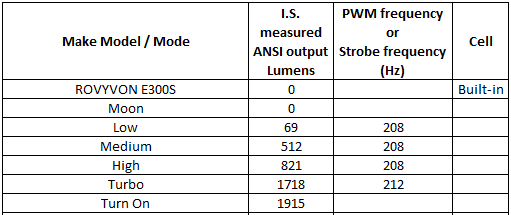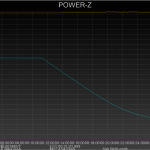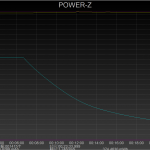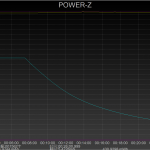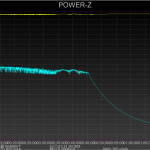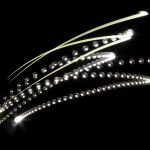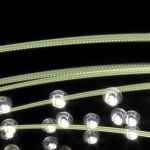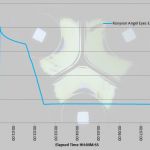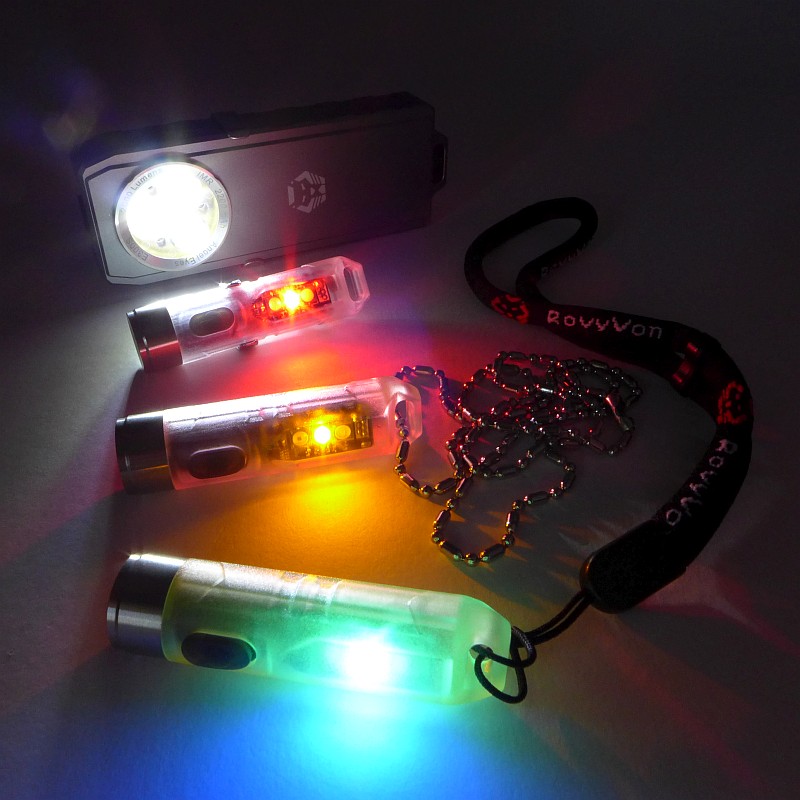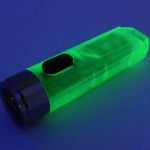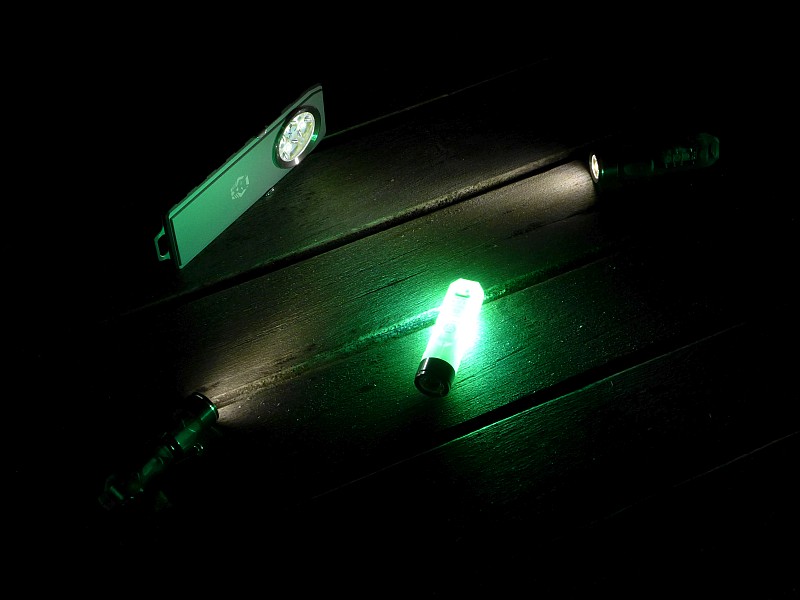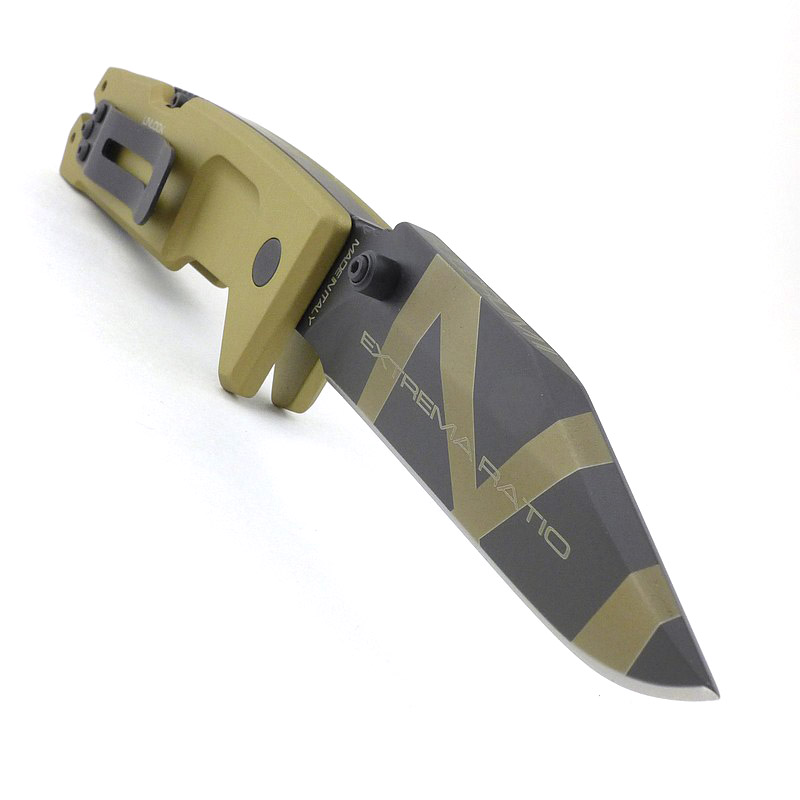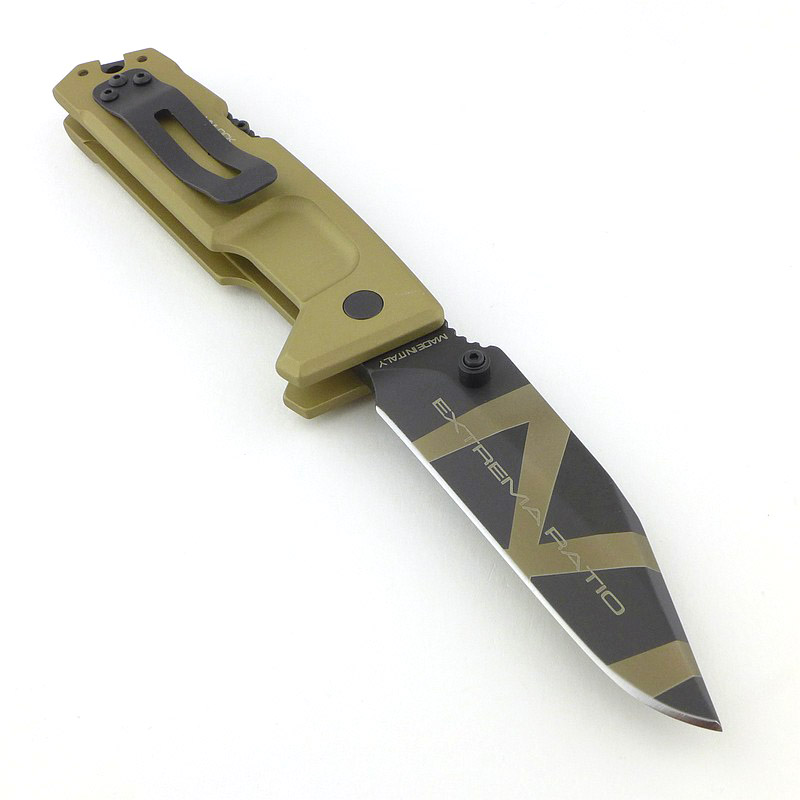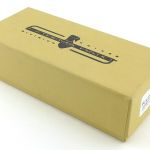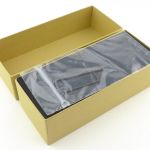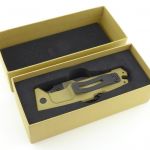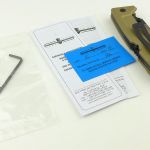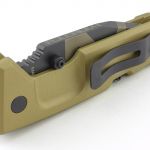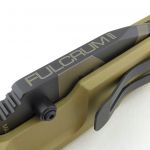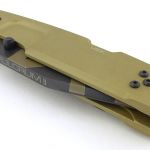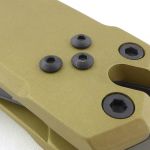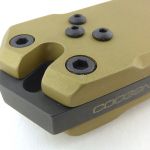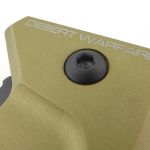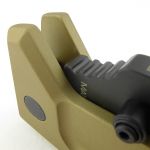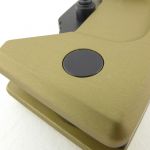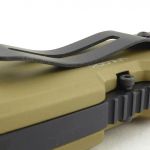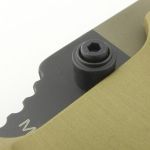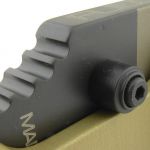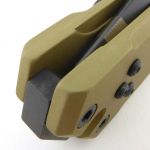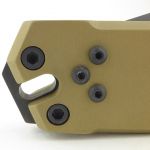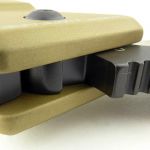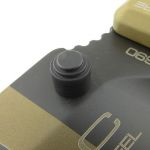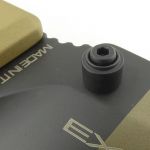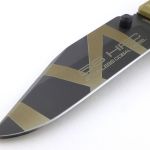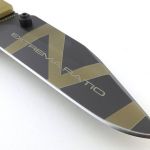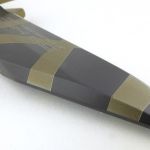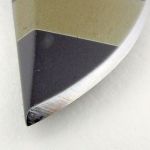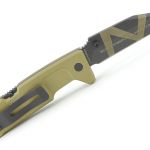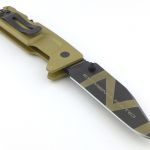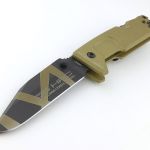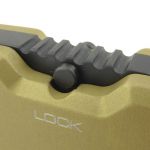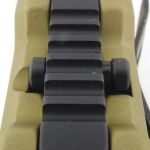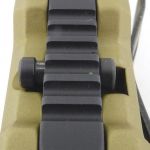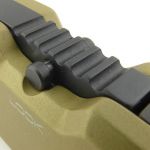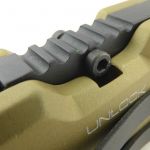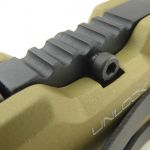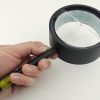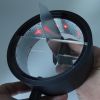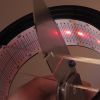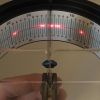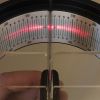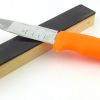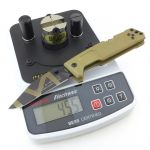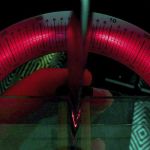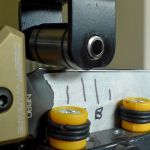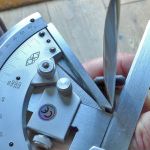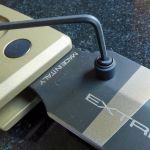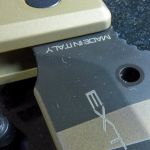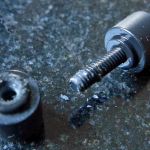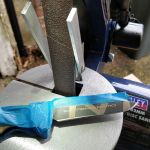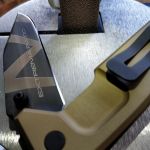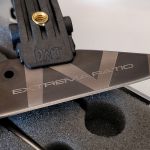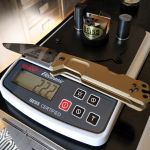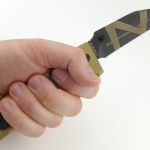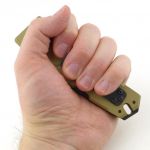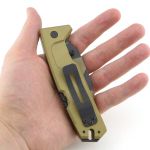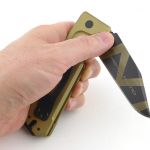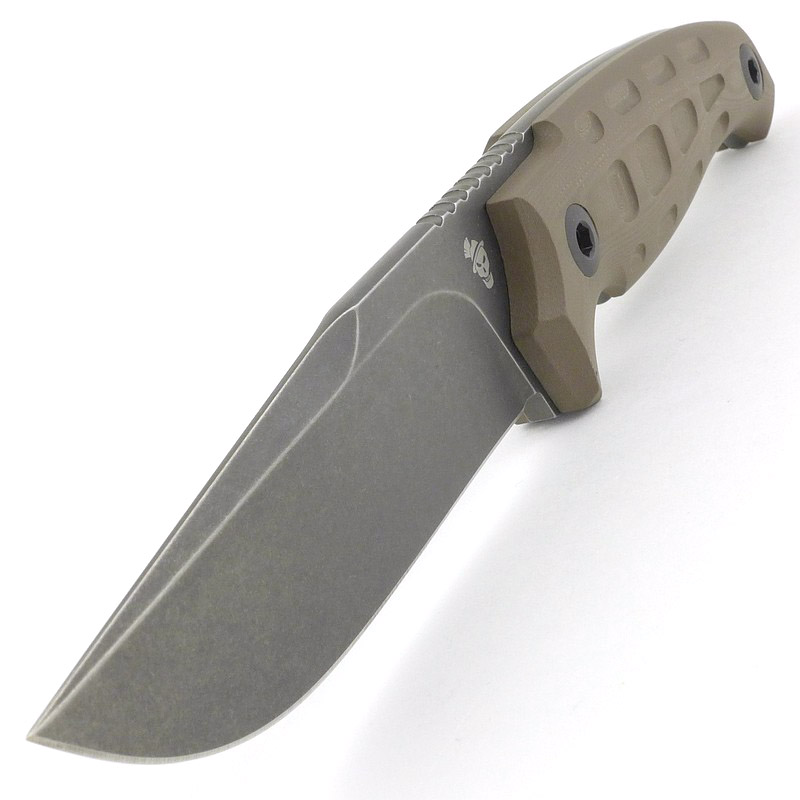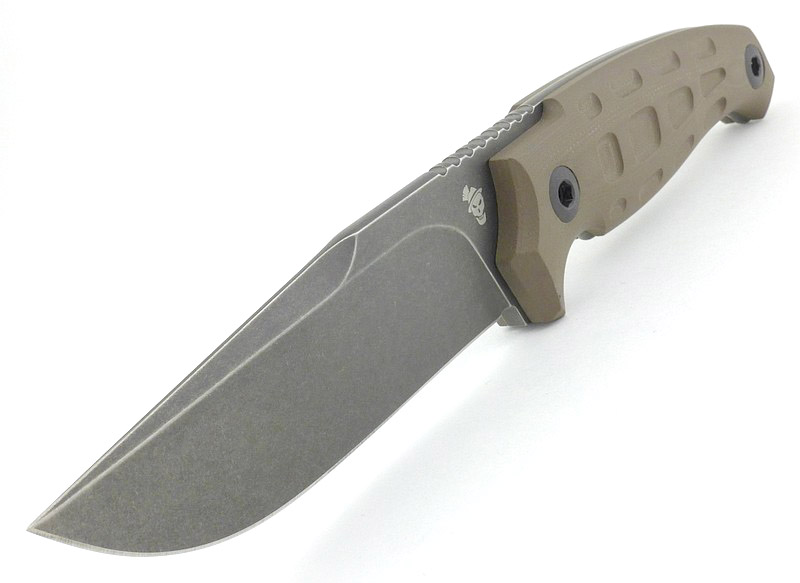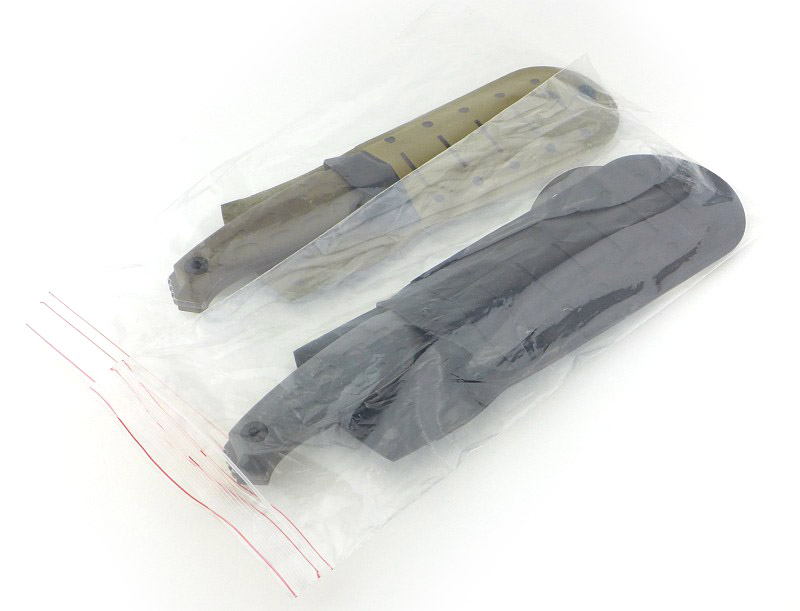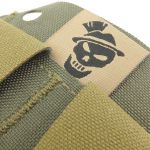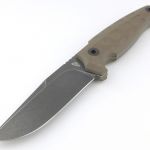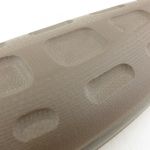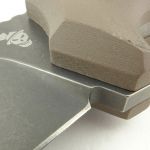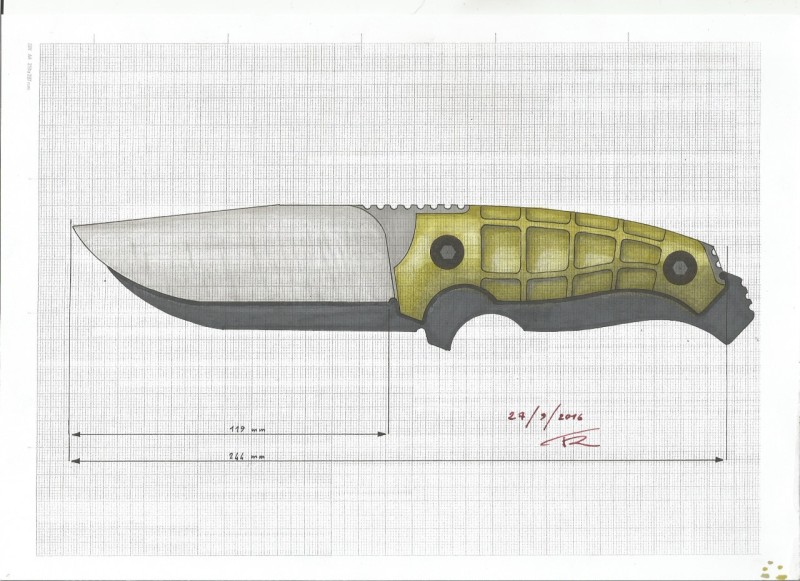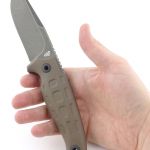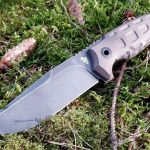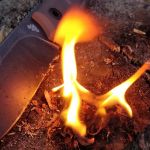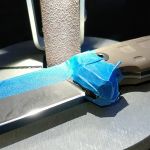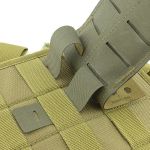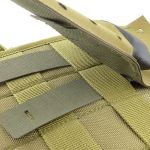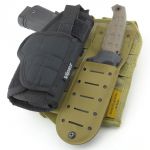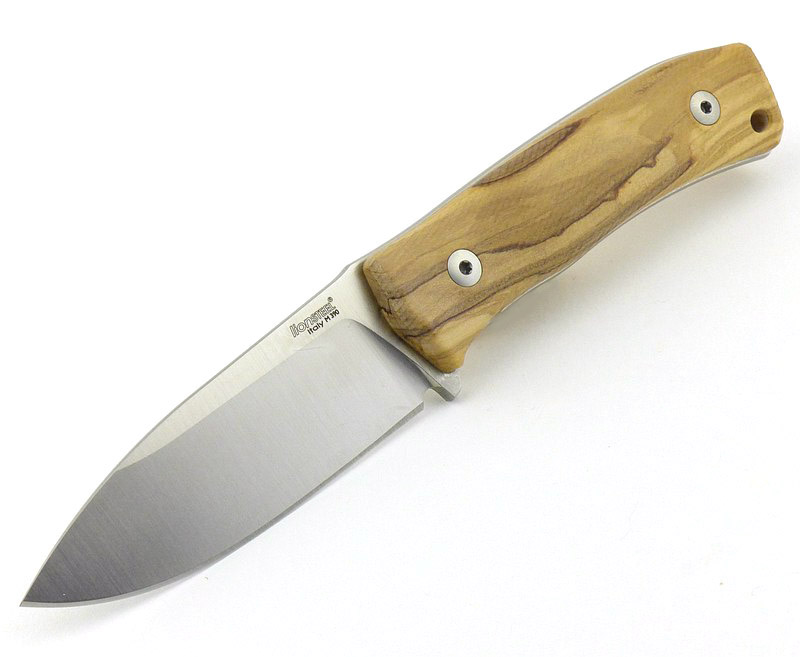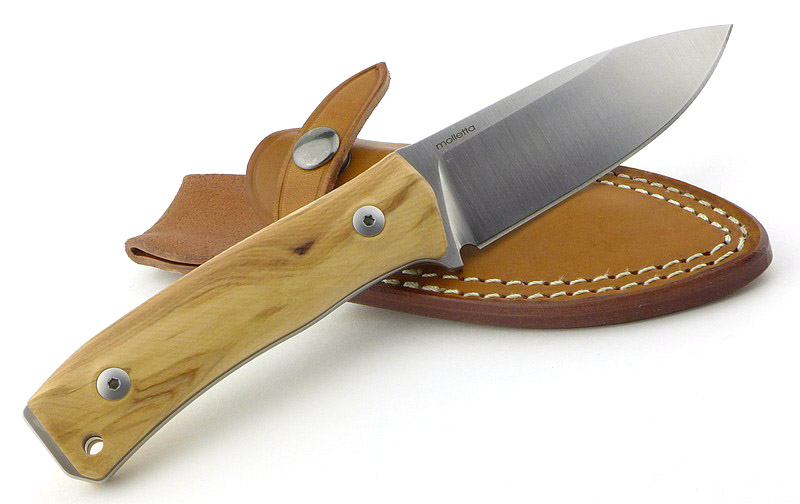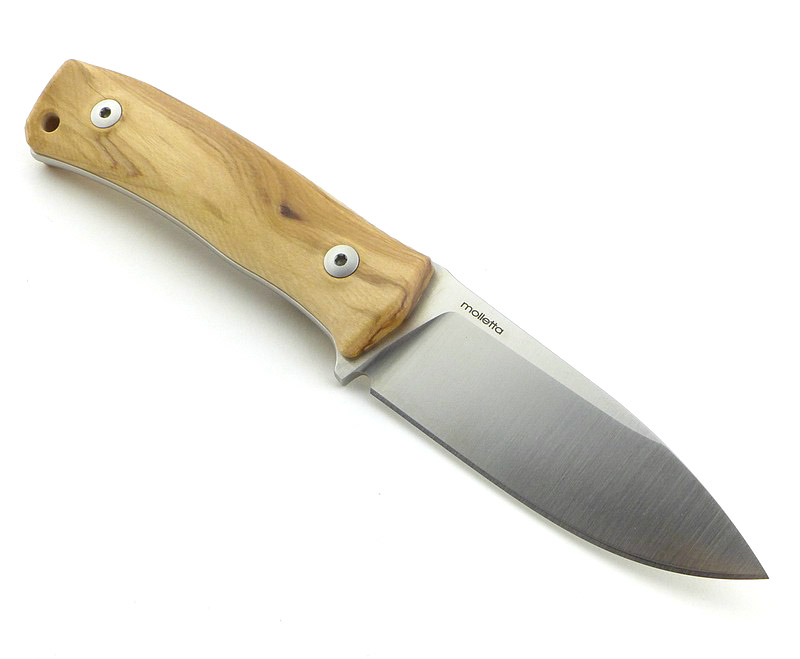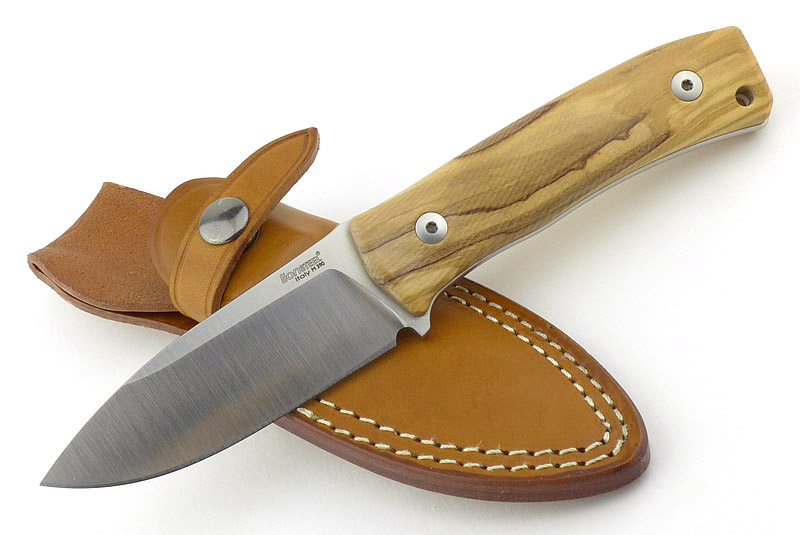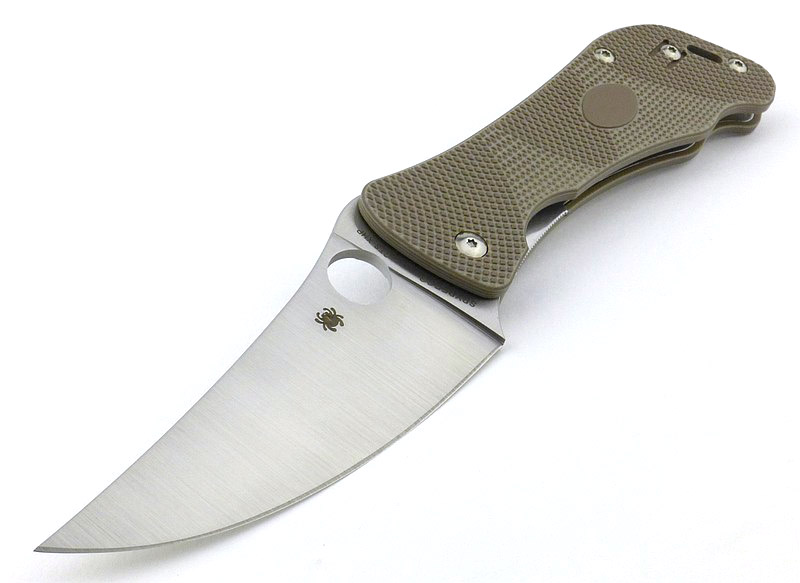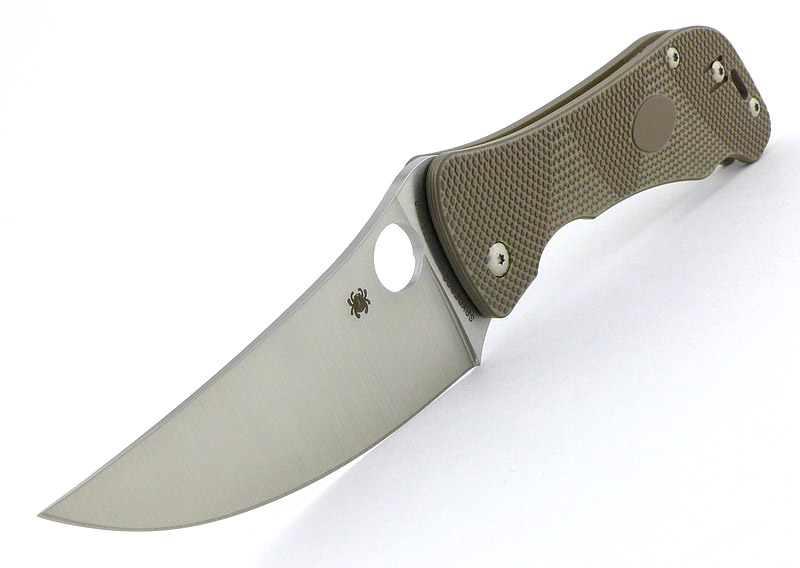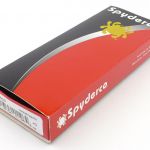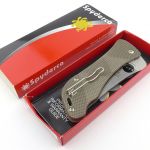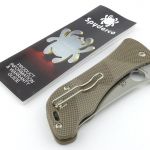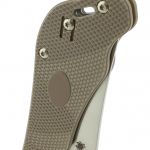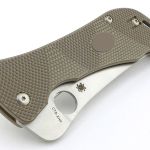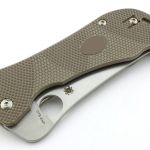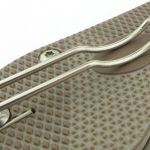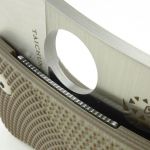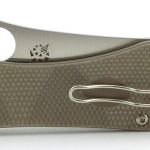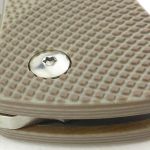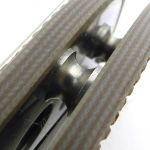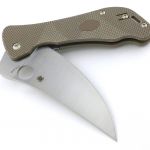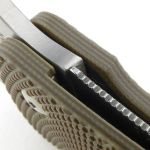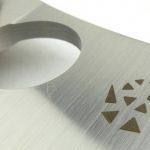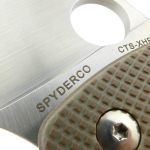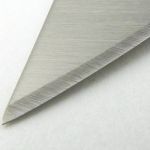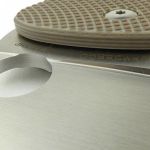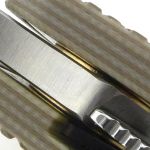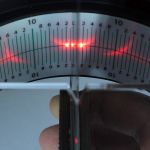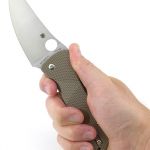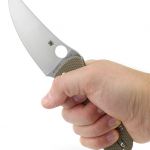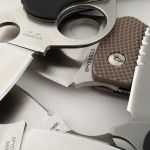This review of the Oberland Arms Wuiderer Sepp knife is a natural follow-on from the previously published review of the Oberland Arms Jager Sepp knife, with both being designed by Tommaso Rumici to specifically meet requirements Matthias Hainich (Executive Director of OA) had for the knives. Though initially the Wuiderer Sepp was not the one I would have picked up first, its capabilities and versatility has made it my favourite little-big-knife.
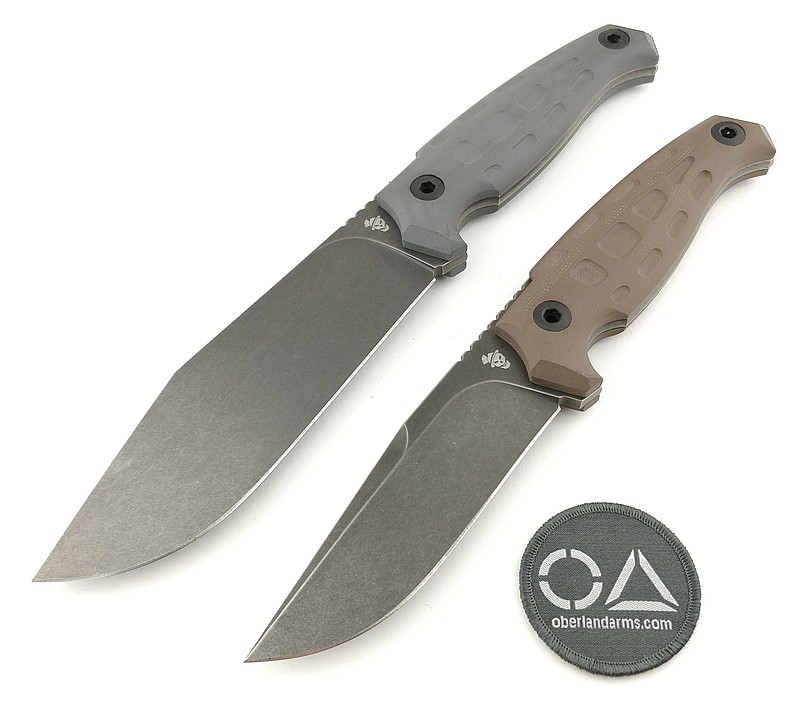
A few more details:
What’s in the box?:
Actually this section is incorrectly named for the Oberland Arms knives, as they don’t have a box, but come in a zip-lock plastic bag; more like bulk supply standard issue kit than a retail product.
A good look round the Wuiderer Sepp’s Sheath – Things to look out for here are:
An interesting Kydex liner/fabric outer combination allowing for secure knife retention without additional straps, and the user can choose right or left handed configuration. The MOLLE strap fixture is unlike any other I have seen, only using a fabric tab to secure the strap.
A good look round the Wuiderer Sepp – Things to look out for here are:
This knife has inspired me to class it as a little-big-knife – the power and presence of a Big knife, but actually it is not that big. Come back to this gallery after reading the design insights in the ‘Explained by the Maker’ section.
Explained by the Maker:
The reasons for certain design choices may not be clear when simply looking at an object, so this section is intended to give an insight into the thinking behind a design by speaking to the designer themselves.
Tommaso Rumici has been kind enough to talk to me about this knife and the design process. This is part two of an interview first published in the review of the Oberland Arms Jager Sepp knife:
Still on the steel, are there any other factors or special processing/heat treatments to support the choice of D2 over other steels?
“In the past years, Viper has acquired a big know how about D2 heat treating. They usually do vacuum treatment, double tempering, and a final cryogenic phase. I can’t go more in details, but the final result is really interesting, on the field.
After 14 years in the knife industry, I’m convinced that a correct heat treatment is far more important than the alloy itself (obviously if we choose among good ones).
During my continuous studies and tests, several times I compared the same steel, treated by different manufacturers, with opposite results: one worked well, another seemed not even the same steel.”
Were the 3D milled handle scales something you had included in a design before? How was it working with this type of production? Did you do the 3D modelling?
“I wanted these knives to have a family feeling with the Oberland rifles, so I inspired to the texture applied to their AR15 handguards and magazines. In the past, David and Golia had milled scales, but this texture was developed for this project only.
The 3D was made directly by Viper. I usually prefer to do so, because every manufacturer uses different software and knows his machines, so the final result is far better.”
Can you talk me through the factors affecting the length and thickness of the blade, the choice of grind, the positioning of jimping, the sharpening choil and any other details you are particularly pleased with or think are absolutely essential?
“When I started working with Matthias, he was really clear about one point: his knives, like his rifles, are made for real operators, non for the tacticool audience, so he asked for performances above all. So we choose grind and thickness to achieve toughness and cutting ability.
The length of the blade, on the short one, follows German regulations. If I remember correctly blades under 12 cm are easier to carry, and they are enough for the fighter-utility role. The other one in an heavy camp knife, so the blade had to be bigger and longer.
The blade design was quite easy compared to the handle. Mr. Hainich asked for something extremely comfortable, with enough grip to work in every environment, and big enough to be used with every kind of military glove. that’s why this handle is so big, compared to civilian knives.”
How did the prototyping go (how many versions)?
“I always try to reach final design before the prototyping phase, and so we did during this project. After Viper made the first prototypes, Oberland checked and tested them, and needed only minimal modifications before the production.”
Thanks go to Tommaso for taking the time to share this.
The Blade and Handle – Detailed Measurements:
For full details of the tests and measurements carried out and an explanation of the results, see the page – Knife Technical Testing – How It’s Done.
The blade is made from D2 steel.
What is it like to use?
Again and again, due to its capabilities, the Wuiderer Sepp gives me the sense it is a much larger knife than it actually is. It is not a small knife, but neither is it a big camp blade, yet it has plenty of chopping/cutting power.
Viewed next to the Jager Sepp, which is a typical size for general purpose utility fixed blade, the Wuiderer Sepp is not that much larger, but has a wider blade and a more weight-forward configuration. By having the full-flat-grind blade, you gain significant slicing ability, helping it to slice as well as a much smaller blade would.
While writing this review my wife passed me a box of frutta di marzapane that needed opening. With the laptop on my lap, the knife I had to hand was the Wuiderer Sepp, so I popped it out of the sheath and my wife exclaimed, “What is that?! Where did that axe come from?!” as she hadn’t noticed the sheathed blade sitting next to me.
The reason for sharing this is that the Wuiderer Sepp is relatively unobtrusive, especially in the sheath. The wide blade definitely gives it more presence, as proven by my wife’s reaction to its appearance, but overall it is nothing like the size of many ‘camp’ style blades.
On the subject of the sheath, this is the only area I’m not so sure about, and only really due to the MOLLE straps. With only the fabric tabs posted through a slot in the strap to retain/hold the end, this does not provide much strength. Fully woven into the full set of PALS webbing, the loading is spread over several strips of webbing, so it should not pull on the strap fixing too much. But used as I showed in the sheath section, where the straps are used as a belt loop, this strap fixing is not very stable – ideally it should be properly fitted to webbing, or a separate belt MOLLE adapter.
Tommaso Rumici, the designer, has been impressed with the performance of Viper’s D2, achieved through their own heat treat recipe. I can only agree. The Structural Edge Testing results in the technical testing section are very impressive and equal performances from other manufacturers using M390 and PSF27, and the result is quite a bit better than Viper’s own N690 (confirming the choice of this D2/heat treat). The recovery result is also important as it shows that the edge stability has not been achieved at the cost of creating brittleness – the edge is rolling rather than chipping and can be stropped back. I have used the Wuiderer Sepp for very heavy chopping, carving and other tasks and the edge just keeps holding. When resharpening, I took the original 46 degree factory edge down to 40 degrees, and further heavy use has not caused any damage.
Using a full flat grind turns what could have been a less useful brute of a blade, into an excellent all-rounder. I’ve used this to chop through good sized branches, all the way to the other extreme of cutting soft sponge foam rubber to size, and it worked well for all jobs.
With its purposeful geometry the Wuiderer Sepp cuts above its weight with a big-knife feel for those heavier jobs. I’ve used the term earlier in the review, which comes from the fact it can cut like a BIG knife, without being big, so somehow ‘little-big-knife’ just seems appropriate; it makes me question the need for anything larger (or smaller).
Review Summary
The views expressed in this summary table are from the point of view of the reviewer’s personal use. I am not a member of the armed forces and cannot comment on its use beyond a cutting tool or field/hunting knife.
Something that might be a ‘pro’ for one user can be a ‘con’ for another, so the comments are categorised based on my requirements. You should consider all points and if they could be beneficial to you.
I’m trying something slightly different and starting with what doesn’t work so well, so I can finish on a more positive note 
_______________________________________________
What doesn’t work so well for me
_______________________________________________
Concerned that the sheath MOLLE strap fixing (fabric tab) is not stable enough.
No specific belt carry option provided.
D2 is only a semi-stainless steel.
_______________________________________________
Things I like
_______________________________________________
Cuts well above its weight – a real ‘little-big-knife’.
Very comfortable hand-filling handle.
Very good blade indexing due to handle design.
Excellent edge retention and edge stability.
Sheath can easily be switched between right and left-handed.
Good at finer cutting tasks as well as chopping.
Stable sheath retention that will hold in tip-up carry.
Fantastic all-rounder.

Discussing the Review:
The ideal place to discuss this review is on the Tactical Reviews Facebook Page 
Please visit there and start/join the conversation.
As well as the Tactical Reviews Facebook Page, please consider visiting one of the following to start/join in any discussion.
BladeForums – Knife Reviews (US based Forum for Knife Discussion)
CandlePowerForums – Knife Reviews Section (Largest and Friendliest Flashlight Community Forum)
The BESS Exchange – A forum discussing technical aspects of sharpness and truly understanding your sharpening process.
